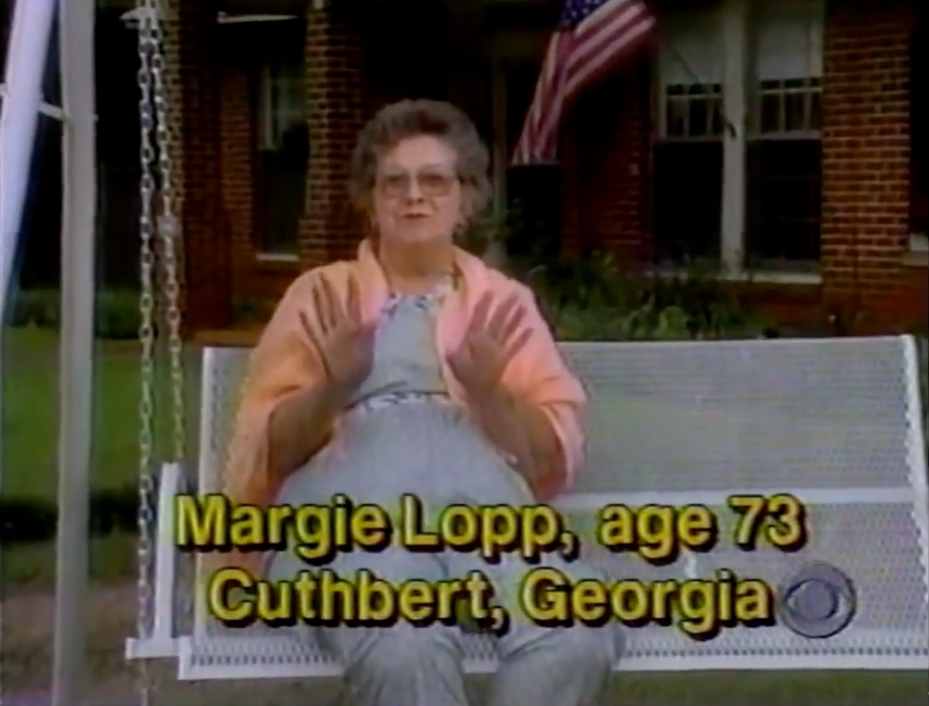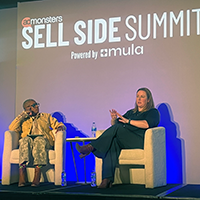Coupon clippers rejoice. Those involved in the manufacture, distribution, and fulfillment of coupons give a cautious thumbs-up, too.
With consumer confidence declining, unemployment rising, and interest rates getting slashed, it appears as if the economy has taken a turn for the worse. But what’s bad for Wall Street often turns out to be manna from heaven for couponing: That snipping sound you hear may very well be consumers clipping up the Sunday paper with abandon.
While the debate continues about whether or not the U.S. is truly in a recession — don’t you dare tell Mr. Greenspan that it is — the consensus within the marketing world is that budgets will be tight. In a recent survey conducted by PROMO and the Promotion Marketing Association, New York City, brand marketers said their 2001 budgets were relatively the same as last year. And even though the economy may not be as bad as alarmists suggest, “I’m concerned about manufacturer over-reaction,” said Steven Kingsbury, president of Promotion Decisions, Cincinnati. Kingsbury was speaking last month in New York City at a roundtable discussion on the economy sponsored by the FSI Council, New York City.
Coupons have never been considered glamorous, and in many marketing camps are viewed as a “wish we didn’t have to, but we do” tactic. But when the economy slides, their stock rises.
“Coupons are still a whipping boy for the CPGs,” jokes David Diamond, president of emerging markets and chief vision officer at Catalina Marketing, St. Petersburg, FL. “[The CPGs] all use coupons, but they like to pretend that they don’t. They’d rather be building brand equity. When the economy is strong, the CPGs can afford to be ‘principled.’ But when it’s not…”
When it’s not, they often jump on the coupon bandwagon like it’s the last stagecoach out of Dodge.
New economic controls may limit how far the economy sinks this time around, but if trends from the last recession in 1990-1991 are any indicator, coupon redemption should rise this year. In that period, redemption rates topped 2.53 percent, according to NCH NuWorld Marketing, Lincolnshire, IL, easily surpassing the average rate of 2.08 percent since 1989. As the economy picked up in 1992, rates slipped to two percent.
Kingsbury says it’s not so much more people using coupons — total usage rates have remained fairly constant at 80 percent in the last two decades — but that those who clip do so more often.
A recession also often prompts manufacturers to boost circulation. Back in 1974, a group of 75 CPGs increased distribution by 53.7 percent. During the lengthier recession of the early ‘80s, distribution shot up 88.2 percent — although the woes of ‘90-’91 brought a more subdued 10.9 percent jump.
Untangling 2000
Before anyone decides how well the market segment will do in 2001, however, it might be nice to get a handle on what happened last year. And based on industry estimates, redemption has nowhere to go but up.
According to NCH, consolidation among the major CPGs — Philip Morris acquiring Nabisco, ConAgra buying International Home Products, General Mills scooping up Pillsbury — resulted in a distribution decline of three percent to 248 billion coupons compared with 1999 (when distribution was the highest it has been in five years).
The decline would have been greater had not some of those CPGs stuck to their pre-consolidation schedules. “A limited number of key clients had a big impact on couponing last year,” says NCH vp-marketing Charles Brown. And they should continue to do so: Distribution among four leading companies has jumped 23 percent since the mergers, he says.
On the other hand, Winston-Salem, NC-based CMS reports that distribution jumped 7.5 percent to 330 billion in 2000, up from 307 billion in 1999.
The rival researchers (not to mention competing fulfillment houses) agree, however, that consumer response in 2000 was tepid at best. NCH says redemption reached 4.5 billion coupons for a 1.8 percent rate, down 4.2 percent from 1999. Coupon savings totaled $3.6 billion, about the same as the previous year, thanks to a 5.5 percent increase in average face value to 77 cents (which outpaced the U.S. cost of living increase).
CMS says usage fell 4.3 percent to 4.4 billion coupons — down from 4.6 billion in 1999 — for a 1.3 percent redemption rate. CMS puts face-value growth up 5.6 percent to 75 cents.
Among other trends:
-
Multiple-purchase requirements were employed in 24 percent of all coupons, up from 23 percent in 1999, according to NCH. However, most manufacturers compensated for that demand with higher unit savings.
-
Expiration periods increased along with face value. Both CMS and NCH say the average duration grew from 3.1 months to 3.5 months.
-
FSIs represented 82.4 percent of all coupons among CPGs, compared with 81.3 percent in ‘99. The other 17.6 percent was split among hand-outs, in/on-pack, on-shelf, magazine ads, direct mail, and electronic systems, per NCH.
CMS says those alternative channels played a larger role, with FSI share slipping from 80 percent in ‘99 to 76 percent last year. What’s more, FSI redemption fell to 1.0 percent, while redemption rates for coupons distributed through direct mail, electronic shelf, in-store handouts, print ads, and targeted frequent-shopper programs all increased, per CMS.
“FSIs are fun to bash because you look at [the concept] and ask, “How can this work?” says Lynn Liddle, vp-p.r. and investor relations at FSI king Valassis Communications, Livonia, MI. “But it really does work and it’s got staying power.” Valassis’s FSI revenues increased 1.8 percent to $603 million last year.
Not Just a Coupon Anymore
The increases in face value and duration indicate that CPGs are listening to what consumers have to say. “We’re seeing rising sophistication in couponing — in delivery and in the offer itself,” says Lorraine Gallaher, director of marketing at CMS. “In past years, the quality of FSIs seemed to drop a bit. Marketers were putting out less attractive deals, expiration dates were decreasing, and the face value was low. Consumers indicated that couponing was becoming more of a hassle than it was worth.”
That statement leads into another industry debate, because while some practitioners discuss the economy and bemoan the fickle consumer, others put the onus on marketers. “A lot of folks take redemption rates as consumer response to an offer, but it’s really [more] measuring the quality of the offer,” says Paul Gordon, executive vp-sales and marketing at Cox Target Media, Largo, FL. “The audience is blameless; they are the jury. If consumers like it, they’ll go for it. Their interest is constant.”
Addressing that issue has led marketers to take more active roles in developing fuller programs around coupon offers. “We’re seeing a lot of individual manufacturers putting together their own Sunday FSIs,” says Gallaher. “Conversely, we’re seeing a lot of retailers distributing coupons through loyalty programs and recruiting manufacturers to join [them].”
Glenview, IL-based Kraft Foods, for instance, has taken the traditional FSI and turned it into an integrated customer relationship tool called Kraft Connections. The core of the effort is Food & Family, a monthly stand-alone insert which launched last spring (April 2000 PROMO) containing coupons, recipes, and other information in praise of the home-cooked meal.
Kraft Connections broadens the scope this spring with a Web site providing a wealth of information and special offers; “Dinner on Hand” in-store displays and leaflets featuring quick-meal ideas and the ingredients needed to make them; on-pack icons shoppers can use to identify items from the recipes; and a “wireless meal solution” that lets Palm Pilot users access recipes as they walk the aisles.
Some other recent examples:
-
To back the opening of its new California Adventure Park, Walt Disney Co., Burbank, CA, teamed with Nestlé, Coca-Cola, and grocery chain Albertson’s, Inc., Dallas. Beginning in February, Albertson’s customers look in the chain’s weekly circular for coupons from participating brands such as Coke, Diet Coke, and Sprite, Stouffer’s Oven Sensations, Friskies, and Nestlé Carnation Coffeemate. When redeemed, the coupons become entry forms for a sweepstakes giving away 50 family vacations to the park.
-
In February, Sears, Hoffman Estates, IL, hosted a series of customer programs celebrating the African-American influence on the 20th century. Shoppers received merchandise coupons along with a complimentary copy of a calendar commemorating Black History Month.
-
To push its prescription allergy drug Claritin, Kenilworth, NJ-based Schering-Plough launched a series of consumer education and pharmacy programs in February that featured coupons (via post-purchase mail-in) and free-trial offers on in-store displays in 50,000 pharmacies nationally.
However, this trend toward enhanced programs does not necessarily include getting more sophisticated about targeting. “Five years ago, the CPGs came to us and said, ‘We want to find the right people and send them a five-cent coupon,’” says Diamond, who nonetheless is a proponent of the strategy. “Face the reality: If you’re an established brand, consumers have seen your coupons before. Why would targeting matter? If you’re serious [about targeting], give them $1 off or a free sample.”
NCH as well has seen a return to mass distribution in the last two years (April 2000 PROMO). “Manufacturers were targeting as an experiment,” says Brown. “But the increasing size of [face values] suggests that targeting doesn’t cut it.”
Virtual Value
Speaking of debates, the Internet’s impact on the coupon industry is still up for one, although both NCH and CMS acknowledge that electronic distribution is gaining ground. NCH credits electronic distribution with 0.5 percent of total distribution in 2000 (about the same as in ‘99), while CMS says that electronic methods (including at-checkout systems, kiosks, shelf talkers, and Internet programs) accounted for 1.3 percent of the total, up from 1.2 percent in ‘99.
And according to CMS, “paperless coupons” are producing a bigger bang for marketing bucks: They’re significantly cheaper to distribute, and more likely to be redeemed — at a rate of about 8.7 percent in 2000.
“The majority of our coupons are now Internet-related,” says Keith Dierberg, marketing manager at Fleischmann’s Yeast, Parsippany, NJ. “A higher percentage of our coupons are accessed by consumers seeking them out on the Web than by consumers [to whom they were] pushed out by us.”
Fleischmann’s hired Cox Target Media to develop its online strategy. Building on the notion that the Internet is about communities, the company last year unveiled Bread Brigade America, a special interest group dedicated to making bread from scratch. Consumers enroll at www.breadworld.com, and earn S&H Greenpoints (through a partnership with Salem, MA-based Sperry Group) by signing up, printing out coupons, and redeeming them at stores.
The program has attracted a demographic that is both younger and more likely to have children than the traditional Fleischmann’s buyer. In its first four months, Bread Brigade America recruited 20,000 members who have used about 20,000 coupons. (“This is not a product that consumers have to buy often,” notes Dierberg.)
Surprisingly, however, the head of online coupon distributor CoolSavings.com, Chicago, says he’s noticed a recent loss of interest among some consumers on the Web. “Consumer usage of coupons is declining, while reaction to offline offers appears to be increasing,” says president and chief operating officer Matt Moog. “It could be that consumers have already ridden the Internet wave and are done experimenting with different sites.”
Moog sees the emphasis online turning from programs that drive Web traffic to programs that drive Internet users into stores. “Brands were thinking about how they could get existing customers online,” says Moog. “They’re now thinking, ‘How can we get the 50 million people using the Web into stores?’”
Next up? TV coupons. In February, Catalina Marketing announced a partnership with San Francisco-based RespondTV, an interactive TV service provider. Viewers will soon be able to order coupons from their couch. The technology will even allow them to enter their loyalty card number via the remote control to get the discount automatically credited to their accounts.
Redemption from the living room. If that doesn’t increase rates, nothing will.
An Angel in My Co-op
The typical Hispanic household in the U.S. receives only one coupon for every 20 delivered to non-Hispanic households. That’s because relatively few of the nation’s 32 million Hispanics buy FSI-filled, major-metro English-language newspapers.
The Benites Group, a Los Angeles-based marketing services shop, is seeking to address that void with the help of a marketing partner rarely tapped since the Crusades ended: the Catholic Church.
Dubbed LatinCoupon, the monthly program will launch in June by distributing 500,000 bound FSI packets: 120,000 through Friday editions of leading Hispanic newspapers such as La Opinion, 130,000 delivered directly to homes in Hispanic-heavy ZIP codes, and 250,000 handed out after Sunday mass at churches in Hispanic neighborhoods. The program has a unique cause-related twist: In addition to the price discounts, manufacturers will promise a donation to a local parish or community organization for every coupon redeemed.
Although Benites Group was in discussion with leading CPGs and pharmaceutical companies, it had not signed any contracts at press time. The company hopes the program will be successful enough to expand to other cities with large Hispanic populations.
Sunday Drivers
The 10 highest-growth categories
- Disposable diapers
- Paper products
- Pet treats
- Cheese
- Snacks
- Household cleaners
- Condiments, gravies, and sauces
- Vitamins
- Toothpaste
- Canned vegetables
Tops in Drops
The 10 Most-Couponed Categories
- Household cleaners
- Condiments, gravies, sauces
- Frozen prepared foods
- Medications, health aids
- Paper products
- Detergents
- Prepared foods
- Cereal
- Personal spa, bath additives
- Wrapping materials, bags
Source: NCH NuWorld



